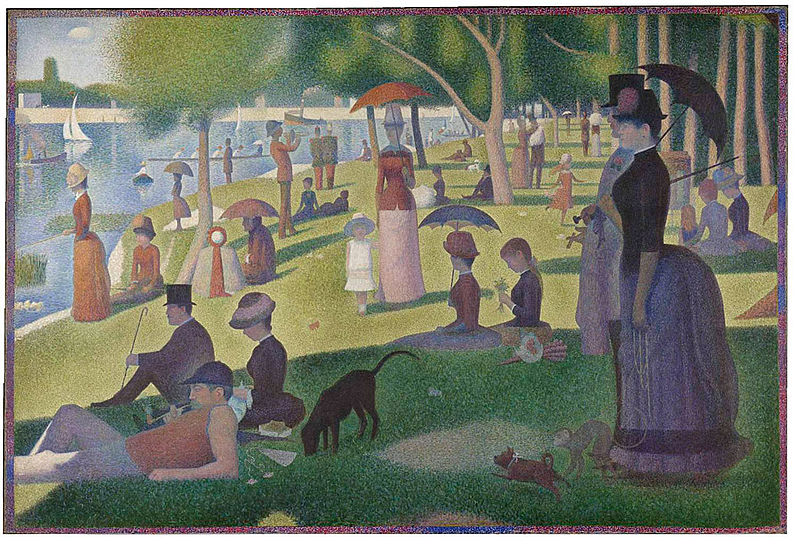French painter Georges Seurat studied writings on color theory and invented a new painting technique that he named "separation of color" or "Divisionism", the main advantage of which is to give a greater vibrancy of color,in 1880s.Seurat's first large painting "A Sunday Afternoon on the Island of La Grande Jatte" may be considered as the founding masterpiece of Divisionism.

At the start of the movement, neo-Impressionism was not welcomed by the art world and the general public. In 1886, when Seurat first exhibited his now most famous work, there was an overwhelming effect of negative feelings. The commotion evoked by this artwork could only be described with words like "bedlam" and "scandal".
From 1892 on, Signac, a sailing lover, regularly sejourns in Saint-Tropez. His style becomes more intuitive and his color touches larger, his palette more luxuriant."Compared with Signac's luminous and light paintings, Seurat's paintings seem grey and immobile", contemporary art critics Julius Meier-Graefe writes to describe the chromatic intensity of Signac's paintings.Thus Signac gives birth to a second Neo-impressionism.
Saint-Tropez, l'orage - 1895
Neo-Impressionists’ use of tiny dots to compose a whole picture was considered even more controversial than its preceding movement, impressionism. Impressionism had been notorious for its spontaneous representation of fleeting moments and roughness in brushwork.Neo-impressionism provoked similar responses for opposite reasons. The meticulously calculated regularity of brush strokes was deemed to be too mechanical.This style of painting was far from the commonly accepted notions of creative processes set for the nineteenth century.

Hiç yorum yok:
Yorum Gönder